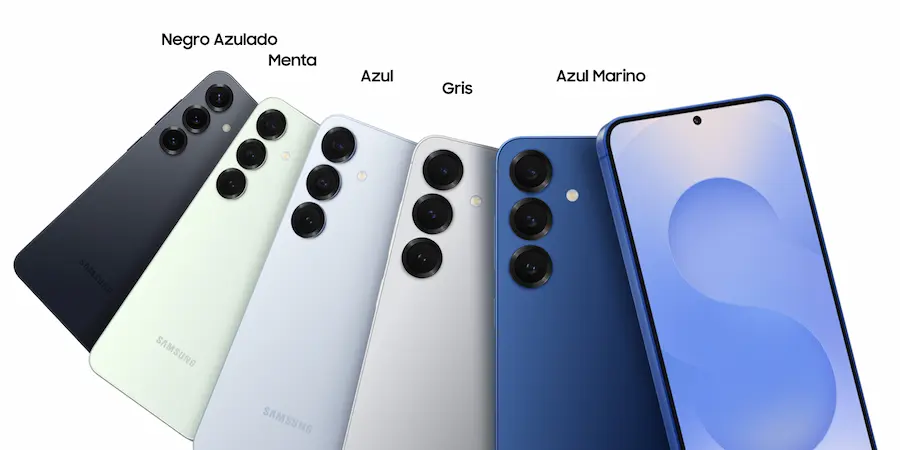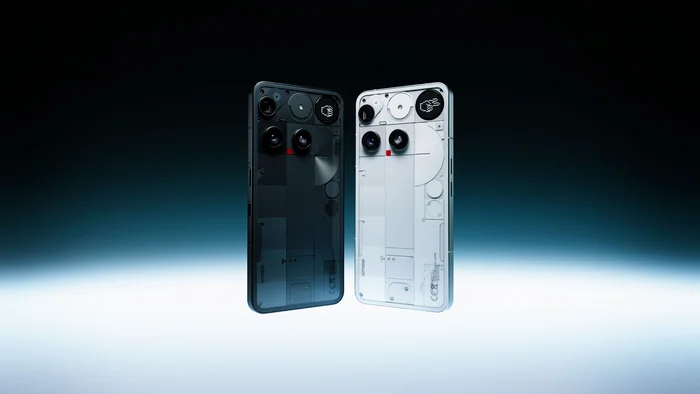If in 2025 you fancy a premium Android without bending to foldables, you’ll likely end up looking at two very clear options: the Nothing Phone 3 and the Samsung Galaxy S25. Both start at a similar price — you can find the Nothing Phone 3 for €799 and the Galaxy S25 for €690 on Amazon. Both mount Snapdragon processors, boast 120 Hz AMOLED panels and capable cameras; however, their personalities couldn’t be more different: one bets on charisma and fast hardware, while the other seduces with polished software and long-term value. Which fits better in your pocket and in the way you use your phone?
Design and display: personality versus refinement
Samsung continues to hone its minimalist aesthetic on the Galaxy S25, with a sober, practical body that conveys solidity from the first touch: Corning Gorilla Glass Victus 2, an Armour Aluminium frame, a very contained thickness of 7.2 mm and IP68 for water and dust. The result is a lightweight, well-finished phone designed to last without calling attention to itself.
Nothing, for its part, unapologetically leans into a head-turning look. The Nothing Phone 3 sports a transparent back, an expanded Glyph system with no fewer than 489 customizable LEDs and a new Shortcut Key to launch actions on the fly. It also boasts an aluminum frame and IP68, but with a slightly thicker, more tactile finish that provides extra grip. If you’re into maker vibes like Raspberry Pi or you’re a fan of RGB mechanical keyboards, this visual language will win you over.
On the display side, both share the same winning base recipe: 120 Hz AMOLED and HDR10+ support. The Galaxy S25 adds LTPO technology to drop as low as 1 Hz when more isn’t needed, which saves battery and helps its excellent outdoor visibility, with brightness peaks up to 2,600 nits. The Nothing Phone 3 counters with a 6.7-inch panel, 2,160 Hz PWM dimming to protect the eyes and a declared peak of 4,500 nits. Although on paper Nothing shows a higher maximum brightness, the S25 feels more efficient and balanced in day-to-day use thanks to LTPO and Samsung’s care with the panel. Point for Samsung in the overall experience.
Performance and cameras: sustained muscle and computational photography
In raw power, the Galaxy S25 arrives very well armed with the Snapdragon 8 Elite for Galaxy, LPDDR5X memory and an improved vapor chamber to better dissipate heat. Depending on the region, it starts with 8 or 12 GB of RAM. The result is top-tier performance that stays stable when you push it hard, something that’s further reinforced by the tuning of One UI 7.1. In fact, synthetic tests usually point to more consistent fluidity over the long run.
The Nothing Phone 3 mounts the Snapdragon 8s Gen 4 with LPDDR5 RAM and can scale up to 16 GB in its top model. In real use it moves with a speed that invites chaining apps, games and multitasking without blinking, but when stress is prolonged, the S25 tends to hold up better. These aren’t huge differences, but if you’re going to run intense “compile” sessions daily, Samsung’s chip and thermal management make a slight difference.

The cameras do draw a clearer separation. The Galaxy S25 proposes a versatile trio: a 50 MP main, a 12 MP ultra-wide and a 10 MP 3x telephoto. It adds computational photography features powered by Galaxy AI and Google Gemini Nano, with improved Nightography and video recording up to 8K. The Nothing Phone 3 opts for a dual 50 MP setup (main + ultra-wide) and a 50 MP front that shines in selfies and video up to 4K at 60 fps; it also offers 3x optical zoom, improved video stabilization and a cleaner camera app. Even so, the greater variety of lenses and the push from AI give the S25 the edge, especially if zoom and low-light scenes matter to you.
Battery, software and the final verdict
On battery and charging, the paths cross. The Galaxy S25 equips a 4,000 mAh battery with 25 W fast charging, while the Nothing Phone 3 flexes a 5,150 mAh silicon–carbon battery, 65 W wired charging and 7.5 W reverse charging. On paper, Nothing offers more capacity and much faster recharge speeds — a very practical combo if you live full throttle between maps, music, camera and games. In practice, Samsung usually squeezes slightly more usage time thanks to the LTPO panel’s efficiency and its power management in One UI. Still, if we look only at the numbers, the point goes to Nothing.
Software and AI are especially favorable terrain for Samsung. The Galaxy S25 ships with One UI 7.1 on Android 15 and offers seven years of system and security updates, a long cycle that, in real life, means peace of mind. It also integrates features with Gemini Nano like Generative Edit, Circle to search, Real-time Translation and intelligent suggestions focused on battery. Nothing OS 3.5, for its part, keeps the house tidy: it’s clean, lightweight and includes useful extras like Smart Widgets, advanced Glyph controls and almost no bloatware. In support, it promises five years of system updates and seven years of security patches. Here, Samsung’s victory is clear due to longevity and the depth of its AI features.
So, which do you pick? If you’re attracted to a design that looks like nothing else, want ultra-fast charging and prefer a clean Android experience, the Nothing Phone 3 is a breath of fresh air among flagships. On the other hand, if you prioritize camera versatility, AI features and an update commitment that will last years, the Samsung Galaxy S25 is the more complete package. In other words, Nothing brings the spark and Samsung the long road; two philosophies that, like a good Tetris “line clear”, can be equally satisfying depending on your play strategy.

